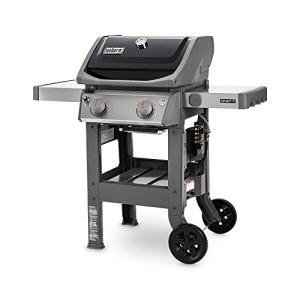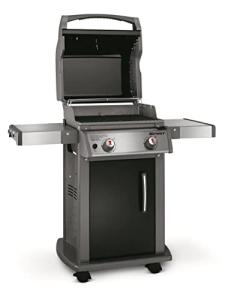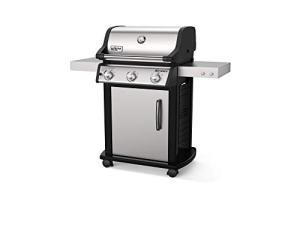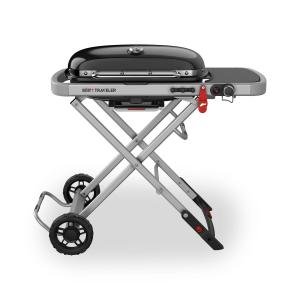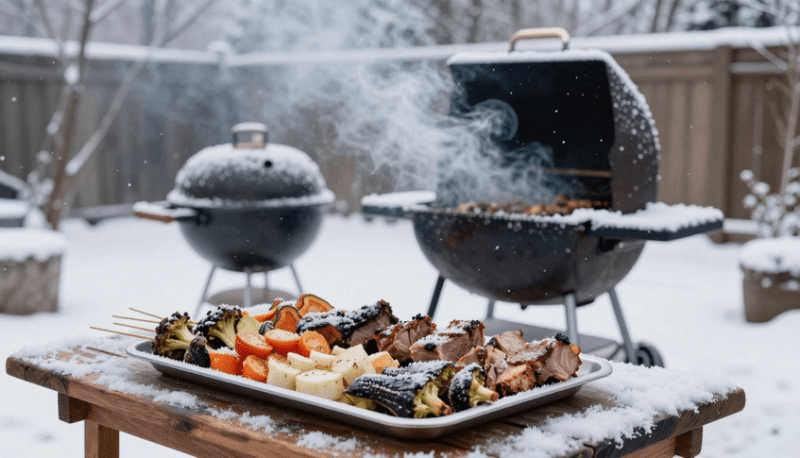Grilled vegetables are a great way to bring out their natural flavors and add a smoky touch to any meal. To grill vegetables for maximum flavor, we should focus on choosing fresh produce and using the right techniques. It's not just about tossing veggies on the grill; preparation is key to enhancing taste and texture.

Before hitting the grill, we need to select vegetables that are fresh and appealing. The right tools, such as skewers and a good grill brush, will also make the process easier. Properly preparing vegetables by cutting them evenly, marinating, or simply seasoning with oil and spices can take our grilling game to the next level.
Once the vegetables are ready, we should focus on using high heat to achieve those desirable grill marks, while ensuring the inside remains juicy and tender. The whole process transforms simple veggies into a delightful dish that's both healthy and delicious.
Key Takeaways
- Choose fresh vegetables and have the right tools.
- Prepare by cutting evenly and seasoning well.
- Use high heat for perfect grill marks and flavor.
Choosing the Right Vegetables
Selecting the right vegetables is key to achieving a flavorful grilling result. We must focus on types that can hold heat well and offer great taste.
Best Vegetables for Grilling
Mushrooms and asparagus are top choices for grilling due to their unique flavors and textures. Mushrooms absorb marinades effortlessly, adding complexity to any dish. Asparagus cooks quickly and has a tender, crisp bite when grilled.
Zucchini and eggplant char beautifully, developing a smoky flavor that complements any meal. We should slice them into even pieces for uniform cooking.
Peppers, especially bell peppers, add vibrant color and sweetness. They caramelize well on the grill.
Corn, when grilled in its husk or directly on the grates, gains a distinct char that's a summer favorite.
Onions and tomatoes can be skewered or placed in grill baskets. When grilled, they release sugars, giving them a delightful sweetness.
Vegetables to Avoid
Not all vegetables fare well under high heat. Like spinach or lettuce, leafy greens wilt too fast on the grill and lose their texture.
Delicate vegetables, such as artichokes, might not withstand grilling heat unless pre-cooked.
Root vegetables, like potatoes and carrots, need longer cooking times. Grilling these requires pre-boiling or par-cooking to ensure they don’t end up raw on the inside.
For the best grilling experience, we should choose firm, fresh vegetables that complement the smoky flavor of the grill. This selection ensures our dish is both tasty and visually appealing.
Essential Grilling Tools

Grilling vegetables requires specific tools to make the process easy and effective. Different tools can help us handle veggies carefully and prevent them from falling through the grill grates.
Skewers and Grill Baskets
Skewers allow us to thread vegetables together, making them easier to flip and cook evenly. Metal skewers are durable and reusable, while wooden skewers can be discarded after use. Before using wooden skewers, we should soak them in water to prevent burning.
Grill baskets are perfect for smaller veggies that may slip through the grates. They provide a large surface area, allowing heat to reach all parts of the vegetables evenly. Baskets can be moved directly over the heat, making them a great option for those who want to grill various veggies at once without using skewers.
Grill Pans and Foil Packets
Grill pans give us a sturdy surface to cook on while still allowing the smoky grill flavor to infuse the vegetables. A pan with holes or slits helps the heat circulate, producing a delicious char. Grill pans are useful for grilling delicate vegetables in specific shapes that skewers or baskets might crush.
Foil packets trap heat and moisture effectively, making them ideal for cooking vegetables that require a little more time to become tender. We can create simple foil packets by wrapping seasoned vegetables tightly in foil, which helps steam them while grilling. This method retains flavors and keeps veggies succulent and juicy.
Preparing Vegetables for Grilling

Grilling vegetables requires the right preparation steps to ensure they are flavorful and cooked evenly. We focus on cutting techniques and marinades to enhance taste and texture.
Cutting and Slicing Techniques
Starting with fresh vegetables, it's crucial to cut them properly for grilling. Uniform slices or pieces ensure that everything cooks at the same rate. We might choose to slice vegetables like zucchini or eggplant into long strips. Bell peppers can be cut into wide sections. Thicker vegetables like potatoes may need parboiling to soften before grilling.
Skewers or a grill basket can make handling small or chopped pieces easier. We always make sure to wash our vegetables thoroughly before beginning the prep work.
Marinating for Flavor
Marinating is key for adding flavor to our vegetables. We use olive oil as a base, mixing it with fresh herbs like rosemary and thyme. Salt and pepper are added to taste. For a tangy kick, balsamic vinegar or lemon juice can be included.
We recommend letting them marinate for at least 30 minutes to absorb the flavors. This can be done in a zip-top bag or shallow dish. The marinade adds taste and keeps the vegetables moist during grilling. Being patient here pays off with more flavorful results.
Grilling Techniques

When grilling vegetables, distinguishing between direct and indirect grilling helps in achieving different textures and flavors. Consistently monitoring the grill's temperature prevents overcooking or uneven cooking.
Direct vs Indirect Grilling
Direct grilling is ideal for vegetables that cook quickly. We place the vegetables directly over the heat source, which helps create those beautiful grill marks. This method is perfect for items like bell peppers and asparagus that need only a few minutes to char. Direct heat intensifies flavors through caramelization, giving vegetables a nice crisp finish.
Indirect grilling, on the other hand, is best for vegetables requiring longer cooking times, like potatoes or thick slices of squash. By placing the veggies away from the direct flame, we ensure they cook through without burning. This method keeps the insides tender while the outsides get a smoky flavor. Adjusting cooking times based on each vegetable's thickness is crucial to achieve perfect results.
Monitoring Grill Temperature
Keeping track of the grill's temperature is crucial for cooking vegetables perfectly. We should preheat the grill to a medium-high temperature, usually between 400-450°F, before adding vegetables. Regularly checking the temperature allows us to maintain consistent heat.
Using a grill thermometer helps us ensure accuracy. If the temperature fluctuates too much, it could lead to uneven cooking. Vegetables might burn on the outside while remaining raw inside. We can achieve evenly cooked, flavorful vegetables without sticking or drying out by monitoring and adjusting the grill heat. This thoughtful approach lets us focus on flavor and texture, enhancing the grilling experience.
Cooking Vegetables to Perfection

In our culinary journey, grilling vegetables such as zucchini and asparagus perfectly involves achieving proper grill marks and preventing sticking and overcooking. Paying attention to these details can elevate the flavor and texture of any grilled dish.
Achieving Grill Marks
We need to place vegetables like zucchini or asparagus directly on the grill grates to get those visually satisfying grill marks. Medium-high heat is key. When placing the vegetables, we should press them lightly against the grates.
Once we see signs of grill marks forming, we give the vegetables a quick 90-degree turn. This ensures even coverage and develops that rich, smoky flavor. We create a beautiful presentation and enhance taste by rotating them halfway through the cooking. Consistent heat application is crucial for precise results.
Preventing Sticking and Overcooking
Sticking is a common issue, but there are ways to avoid it. A light coat of oil can help. Oiling the vegetables before placing them on the grill creates a barrier between the food and the grates. It's important not to drench them in oil, but just enough to protect and enhance browning.
Timing is another factor. We stay vigilant to prevent overcooking. For asparagus, this might mean only a few minutes per side, while thicker vegetables like zucchini might take a bit longer. By keeping an eye on the grill and adjusting the time based on thickness, we ensure each vegetable remains tender yet flavorful.
Serve and Savor

This section focuses on presenting beautifully grilled vegetables and choosing the right pairings and sauces to enhance their flavors. Attention to detail in plating and pairing can elevate a simple dish into a memorable culinary experience.
Plating Grilled Vegetables
When we plate grilled vegetables, visual appeal plays a key role. Start with a variety of colors and textures to create an inviting platter. Arrange vegetables in layers or in a circular pattern to catch the eye.
Adding a sprinkle of fresh herbs like basil or parsley not only brightens the dish but also complements the smoky flavor. Consider drizzling olive oil or a balsamic reduction for added flair and taste.
We might want to serve vegetables on a rustic wooden board or a colorful dish to enhance the presentation. This enhances the natural beauty of our grilled produce and draws guests in. Our guests will appreciate the effort in presentation as much as the taste.
Pairings and Sauces
Pairing grilled vegetables with the right accompaniments is crucial. Grilled vegetables shine with a simple drizzle of balsamic vinegar or olive oil.
Pair them with proteins like grilled chicken, fish, or halloumi cheese to create a balanced meal. For versatile serving options, add them to wraps, sandwiches, or omelets.
For sauces, a classic option is homemade aioli or tangy tzatziki, which can be served on the side. These condiments add richness without overpowering flavors. Dairy-free options, like cashew cream or lemon tahini drizzle, are excellent choices for those with dietary preferences. These additions refine our grilling recipes and make them exciting.
Frequently Asked Questions
When grilling vegetables, different types, methods, and marinades can enhance their taste. Furthermore, grilling techniques for both gas and charcoal grills can affect the end flavor and texture of the veggies. Utilizing olive oil and tools like baskets or foil can also make a difference.
What are the best types of vegetables for grilling to enhance their flavor?
We often find that vegetables like bell peppers, zucchini, squash, asparagus, eggplant, mushrooms, and corn work well for grilling. Their textures and natural flavors are perfect for absorbing marinades and achieving a nice char on the grill.
What techniques should be used to grill vegetables on a charcoal grill for optimal taste?
When we use a charcoal grill, it's important to control the heat carefully. Spread the coals evenly for a consistent temperature. We often direct vegetables over the coals for a stronger flavor or use indirect heat to gently cook them.
How can one marinate vegetables for grilling to maximize their flavor profile?
We recommend marinating vegetables in olive oil, balsamic vinegar, and spices like garlic and herbs. The marinade should complement, not overpower, the vegetables' natural taste. Let them soak for at least 30 minutes to absorb flavors.
What is the most effective method for grilling vegetables in a basket or foil?
Using a grill basket or foil packets keeps small pieces from falling through the grates. Arrange vegetables in a single layer for even cooking. We prefer using a bit of oil or non-stick spray to prevent sticking.
How does applying olive oil to veggies before grilling affect their flavor and texture?
Olive oil enhances the flavor by adding richness and prevents vegetables from drying out. It forms a slight crust that locks in moisture and lends a pleasant texture. We usually brush the vegetables with oil right before placing them on the grill.
How can vegetables be grilled on a gas grill while ensuring they are flavorful and well-cooked?
For gas grilling, we often preheat the grill to a medium-high temperature. This helps achieve a perfect sear while cooking evenly. We also recommend using marinades or seasonings to elevate the flavors. Cooking with closed lids can trap heat for enhanced taste.
DISCLAIMER
This document is provided for general information purposes only. It should not be relied upon as providing legal advice, technical, or specific operational guidance to the reader, whether as to the practices described in the document or the applicable legal requirements and regulations. Backyard Grilling Pros.com expressly disclaims any responsibility for liability arising from or related to the use or misuse of any information in this document.

